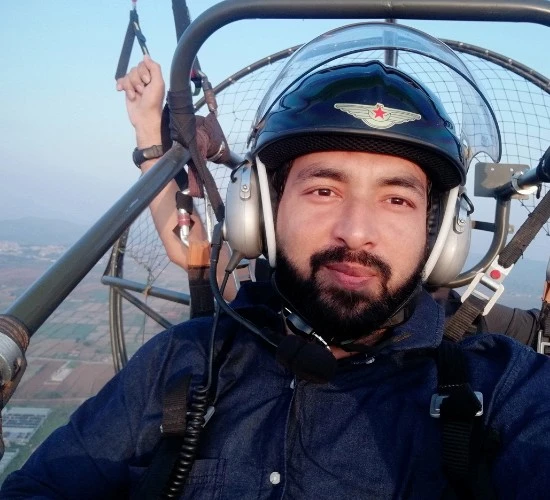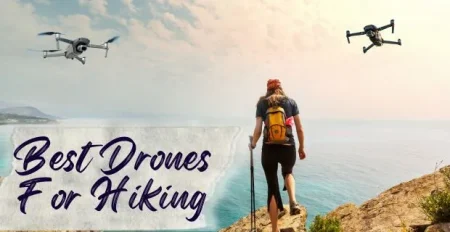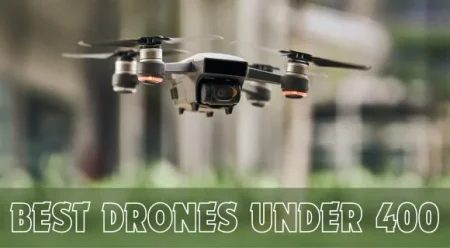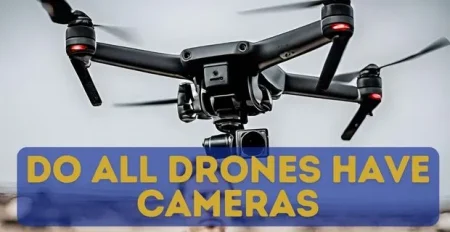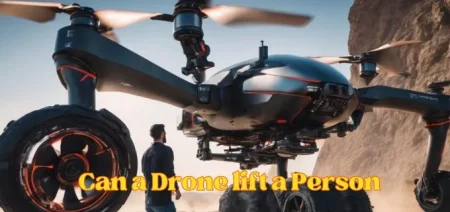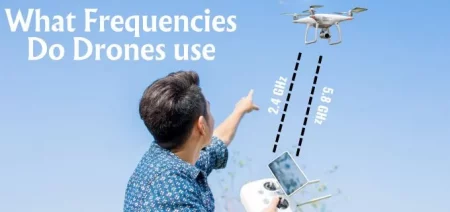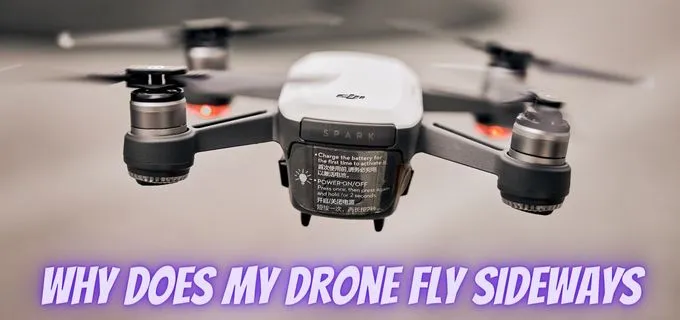
If your drone flight is not smooth and stable and you wonder, “Why does my drone fly sideways?” you’re not alone. When it comes to flying drones, enthusiasts worldwide encounter similar challenges. A typical issue faced by drone pilots is the drone flying sideways or drifting in a particular direction, leading to difficulties in capturing the perfect shot or enjoying a seamless flight experience. This situation can be discouraging for drone pilots.
Why Does My Drone Fly Sideways
This article intends to discuss the causes of sideways drone flight and recommend potential solutions to this problem. Several other factors may contribute to this issue. Situational factors, such as poor weather conditions or a slanted launch surface, can also cause the drone to tilt. Additionally, the drone’s inner workings, including calibration, hardware, and software, can affect its stability.
Furthermore, slanted surfaces, unfavorable weather, and electromagnetic interference can also impact the drone’s stability and cause it to tilt.
How To Fix A Drone Tilting To One Side?
In the following sections, we will delve into the different factors that may cause your drone to fly sideways and offer solutions on how to fix them. By understanding the underlying reasons behind this issue, you can ensure your drone’s stability and enjoy a smoother and safer flying experience.
1. Unbalanced Propellers
One of the reasons why your drone may fly sideways is due to unbalanced propellers. Propellers that are not balanced can cause vibrations, which can make the drone lean to one side. It can affect its stability and make it difficult to control. Unbalanced propellers can also strain the motor unnecessarily, causing it to overheat or wear out faster.
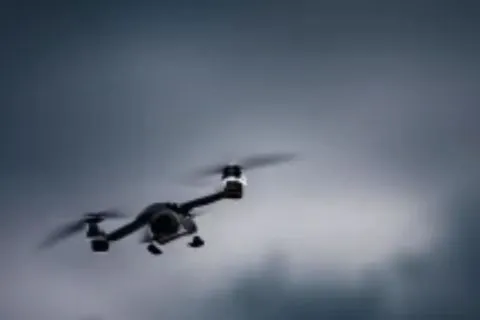
To fix it, you can do this by using a propeller balancer, a device that measures the balance of the propellers and helps you adjust them accordingly. You can also balance the propellers manually by adding or removing weight from the blades until they are perfectly balanced. Check the propellers regularly and rebalance them if necessary to ensure smooth and stable flight.
It is necessary to replace the propellers entirely if they are significantly worn out or damaged. In this case, make sure to use the correct propellers for your drone model and follow the manufacturer’s instructions for installation. Replacing the propellers can improve the drone’s stability and make it easier to control, resulting in a better flying experience.
2. Motor Issues
Another possible reason for your drone flying sideways could be motor issues. A faulty motor or incorrect direction can cause the drone to tilt to one side. If one of the motors is not working correctly, the drone may be unable to maintain its flight level and lean to one side. In addition, if the motor’s direction is incorrect, the drone may rotate or drift to one side, affecting its stability.
To identify and fix motor issues, you can conduct a motor test. It involves running each motor individually and observing their performance. If you notice any abnormalities or inconsistencies, it may indicate a faulty motor that needs to be replaced.
3. Calibration Issues
Calibration is a crucial aspect of drone flying, and any discrepancies can cause the drone to fly sideways. The drone’s accelerometer, compass, and gyroscope are essential components that must be calibrated correctly. If any of these components are not calibrated correctly, the drone may be unable to maintain its flight level, resulting in tilting or drifting to one side.
Calibration methods may vary between drone models, but generally, the process involves placing the drone on a level surface and following instructions in the drone’s software settings.
4. Environmental Factors
Environmental factors can also impact the drone’s stability and cause it to fly sideways. Temperature, humidity, and altitude can affect the drone’s flight characteristics, causing it to tilt or drift to one side.
You may need to adjust the drone’s settings to fly in different environmental conditions. For example, in windy conditions, you may need to increase the drone’s speed or adjust its angle to maintain stability. When flying at high altitudes, you may need to adjust the drone’s power settings to compensate for the thinner air.
5. Flying in Strong winds
Flying your drone in strong winds can be challenging and can cause your drone to drift or fly sideways. Strong winds can also affect the stability and control of your drone, making it difficult to fly.
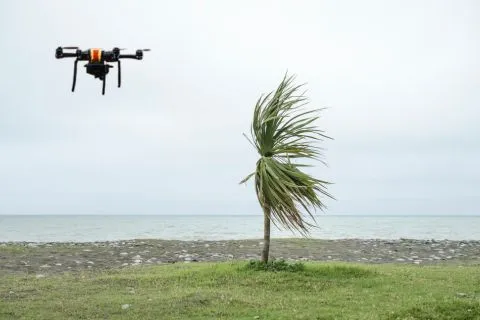
To prevent this problem, it’s advisable to check the weather conditions before operating your drone. If you must fly in windy conditions, you can use a drone with a higher wind resistance rating or fly closer to the ground to reduce the impact of the wind.
6. Software Issues
Software issues can also cause your drone to fly sideways. The drone’s flight controller software is responsible for ensuring the drone maintains its flight level and stability. If the software is not configured correctly or the drone is connected to the controller properly, it can cause the drone to tilt or drift to one side.
You can reset the drone’s software to its default settings to fix software issues. This can be done through the drone’s software settings or by resetting the drone’s firmware.
7. Center of Gravity
The center of gravity is an essential factor that affects the drone’s stability and flight characteristics. If the drone’s weight is unevenly distributed, it can cause the drone to tilt to one side. The center of gravity should be located in the center of the drone to ensure a stable and level flight.
You can add or remove weight from the drone to adjust the center of gravity. For example, you can add or remove batteries to adjust the drone’s weight distribution.
8. Strong electromagnetic interference from nearby sources
Suppose you fly your drone near sources of electromagnetic interference, such as power lines, radio towers, or other electronic devices. In that case, it can affect the performance of your drone and cause it to fly sideways or even lose control.
To avoid this issue, you should always fly your drone in an open area away from sources of electromagnetic interference. You can also use an electromagnetic interference filter to reduce the impact of interference on your drone’s performance.
9. Other Factors
Other factors can also affect the drone’s stability and cause it to fly sideways. Launching the drone from a slanted surface can cause it to tilt to one side. The drone’s flight may be impacted, causing it to drift or tilt to one side due to interference from other electronic devices.
To avoid interference, you can fly the drone in an open and clear area, away from other electronic devices. When launching the drone, choose a flat and level surface to ensure a smooth takeoff.
10. Seek professional assistance
Suppose the previously mentioned solutions still need to be resolved. In that case, it might be the right time to seek professional assistance. A drone technician can help you diagnose the problem and provide a more thorough solution.
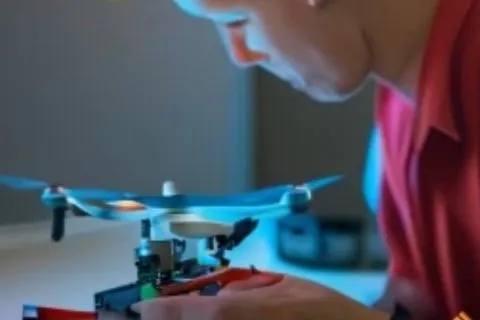
Some possible issues that a professional may identify include the following:
- Faulty hardware: One or more components of your drone may be faulty and need to be replaced.
- Software issues: Your drone’s software may need to be updated or reinstalled to fix the tilting problem.
- Internal wiring issues: Internal wiring issues may be causing your drone to tilt to one side, which requires a more intricate repair process.
A drone technician can help you diagnose and fix the problem, saving you time and effort in the long run. Feel free to seek professional help if you need help with how to proceed.
Are drone propellers spinning but not flying?
If your drone’s propellers are spinning, but it’s not flying, there are several possible reasons for this issue:
- Unbalanced propellers: Unbalanced propellers can cause your drone to wobble or flip over during takeoff. Make sure that the propellers are balanced and not damaged.
- Battery issues: If the Drone battery is not fully charged or is damaged, it can prevent the drone from generating enough power to take off.
- Incorrect weight distribution: Uneven weight distribution in your drone can result in instability during takeoff.
- Sensor calibration issues: If the sensors on your drone are not calibrated properly, it can cause the drone to be unstable or not fly at all.
If you’ve checked all of the above and still have issues, there may be a more complex issue with your drone. It’s recommended that you seek the assistance of a professional drone technician to diagnose and fix the issue.
Drone drifting problem?
If your drone drifts during flight, it’s not holding a stable position and is moving in a certain direction without input from the pilot. Below are some potential reasons for drone drifting and their corresponding solutions:
- Strong winds
- Compass Calibration
- IMU Calibration
- Motor Issues:
- Propeller Issues
- GPS Signal Issues
By identifying the cause of your drone’s drifting and taking appropriate measures, you can ensure that your drone stays stable and safe during flight.
Conclusion:
A Drone flying sideways can be frustrating and even dangerous, but there are several reasons why it may happen. Unbalanced propellers, motor issues, calibration problems, environmental factors, software issues, and center of gravity imbalances can all contribute to a drone tilting to one side.
However, by understanding and addressing these factors through regular maintenance, calibration, and careful attention to environmental factors, you can ensure a smoother and safer flying experience.
